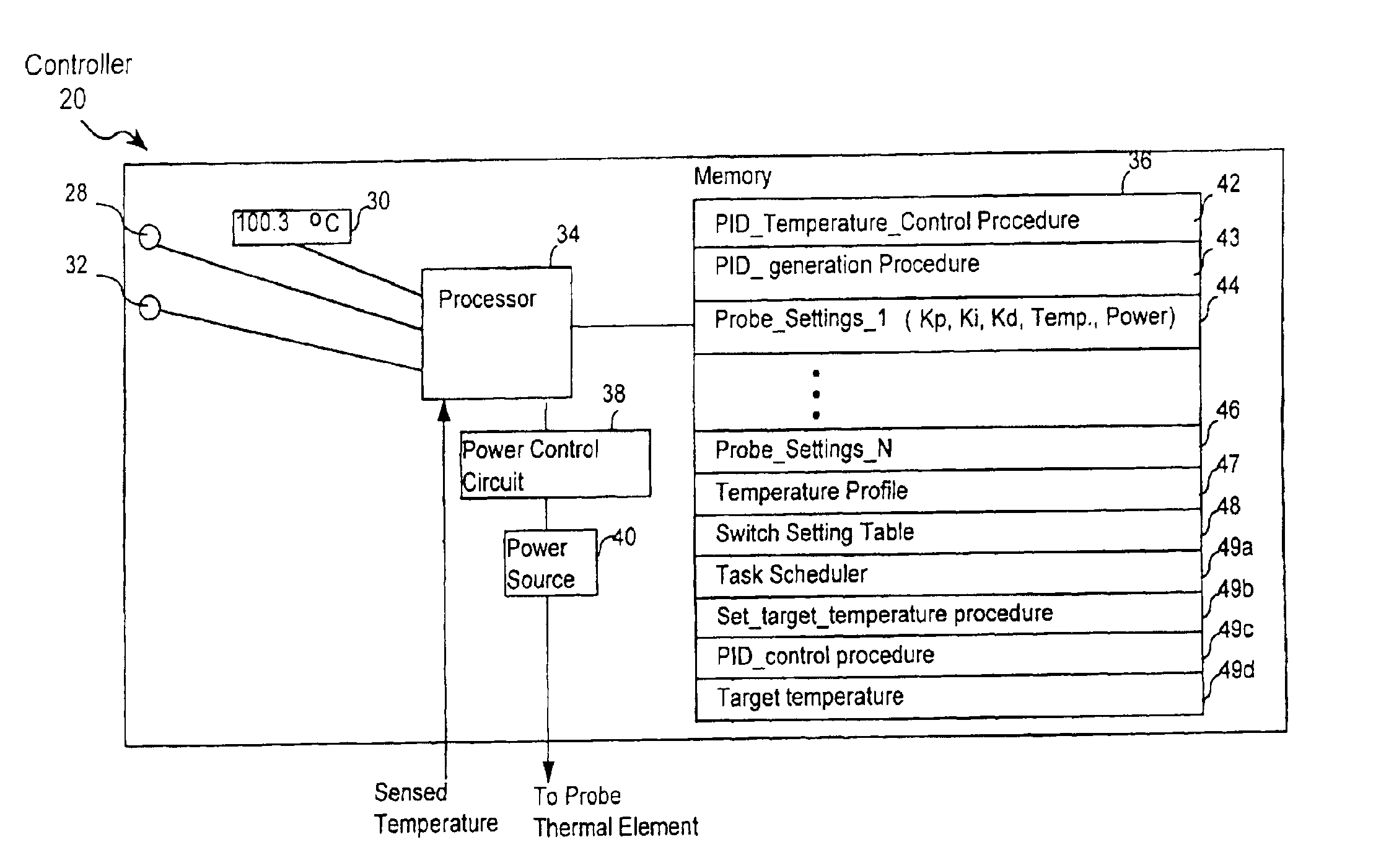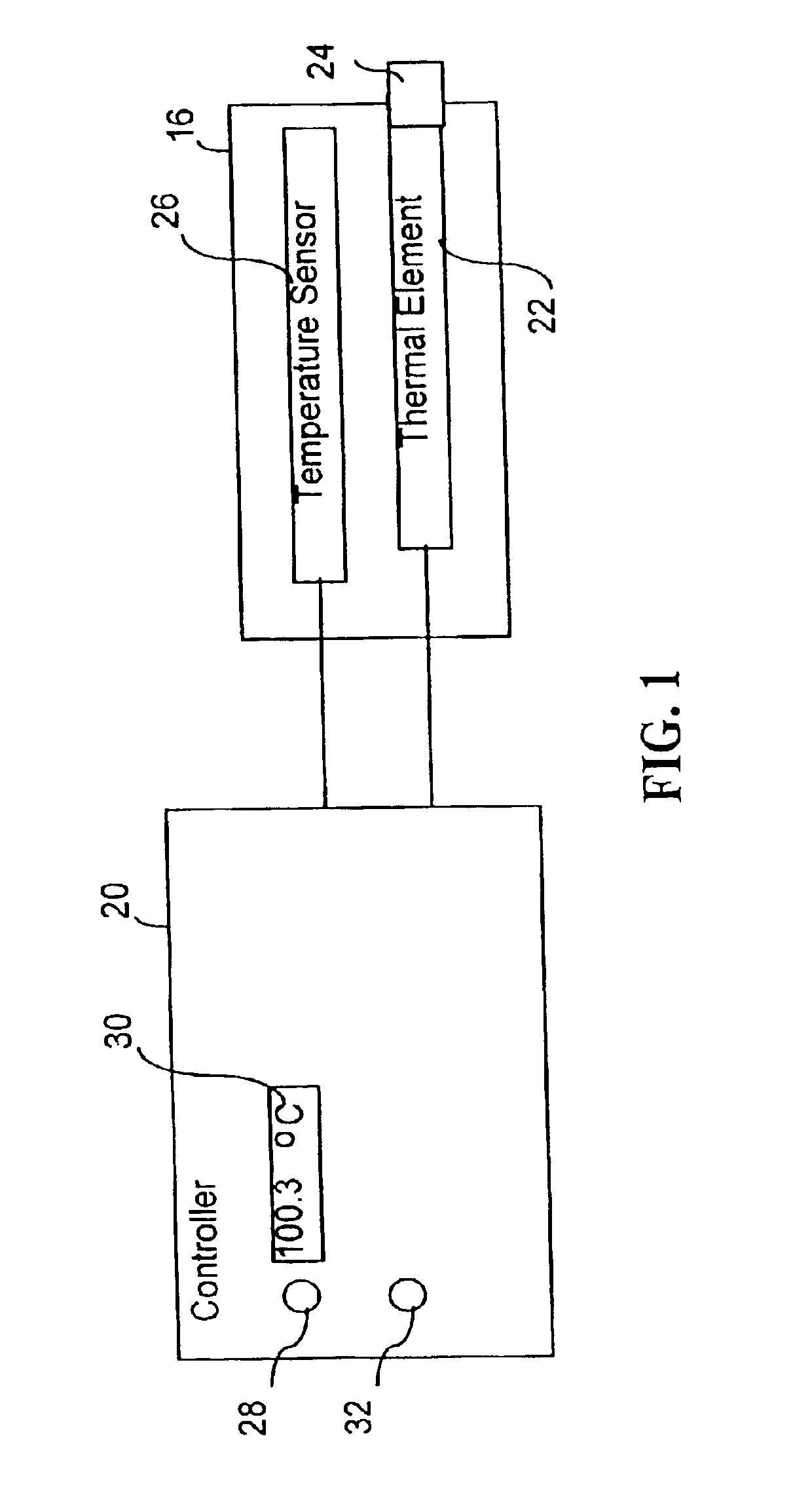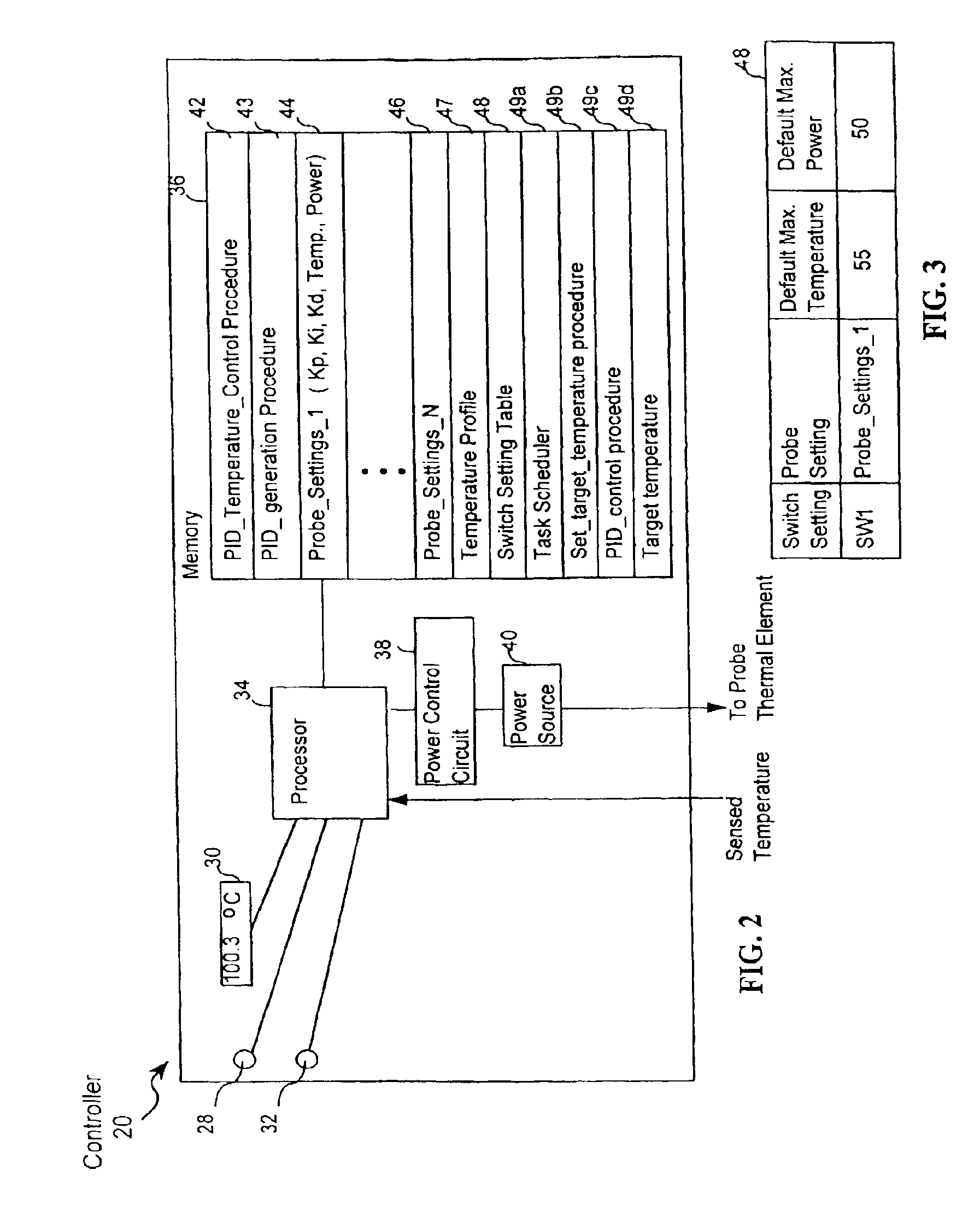Method and apparatus for controlling a temperature-controlled probe
a temperature-controlled probe and temperature-controlled technology, applied in the field of probes, can solve the problems of osteoarthritis, long healing process, nerve injury, etc., and achieve the effect of reducing overshoot and fine control
- Summary
- Abstract
- Description
- Claims
- Application Information
AI Technical Summary
Benefits of technology
Problems solved by technology
Method used
Image
Examples
Embodiment Construction
[0038]The presently preferred embodiment of the present invention is depicted in FIG. 15. However to arrive at a better understanding of FIG. 15, it is useful to first consider FIGS. 1-14, which are applicable to the invention described in U.S. Pat. No. 6,162,217 and will lead to a better understanding of the present invention. The inventions described in the '217 patent will be referred to herein as the parent invention, or the invention in the '217 patent.
[0039]Turning, then, to FIG. 1, the presently preferred invention as well as the parent invention include a probe 16 and a temperature controller 20 (or a generator 20) that is coupled to the probe. As shown in FIG. 1, a thermal element 22 is attached to a probe tip 24 of probe 16. Thermal element 22 can be used to alter temperature of tissue being treated with probe 16, by heating or cooling. Without limitation, thermal element 22 may include at least one of a transducer that delivers RF energy to the tissue, a resistive heating...
PUM
| Property | Measurement | Unit |
|---|---|---|
| time | aaaaa | aaaaa |
| temperature | aaaaa | aaaaa |
| power | aaaaa | aaaaa |
Abstract
Description
Claims
Application Information
 Login to View More
Login to View More - R&D
- Intellectual Property
- Life Sciences
- Materials
- Tech Scout
- Unparalleled Data Quality
- Higher Quality Content
- 60% Fewer Hallucinations
Browse by: Latest US Patents, China's latest patents, Technical Efficacy Thesaurus, Application Domain, Technology Topic, Popular Technical Reports.
© 2025 PatSnap. All rights reserved.Legal|Privacy policy|Modern Slavery Act Transparency Statement|Sitemap|About US| Contact US: help@patsnap.com



